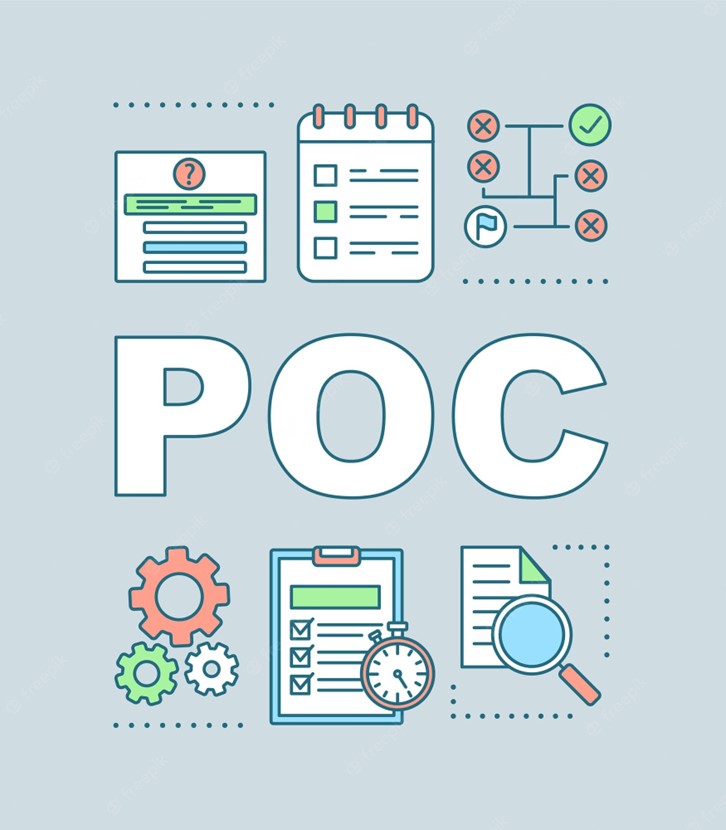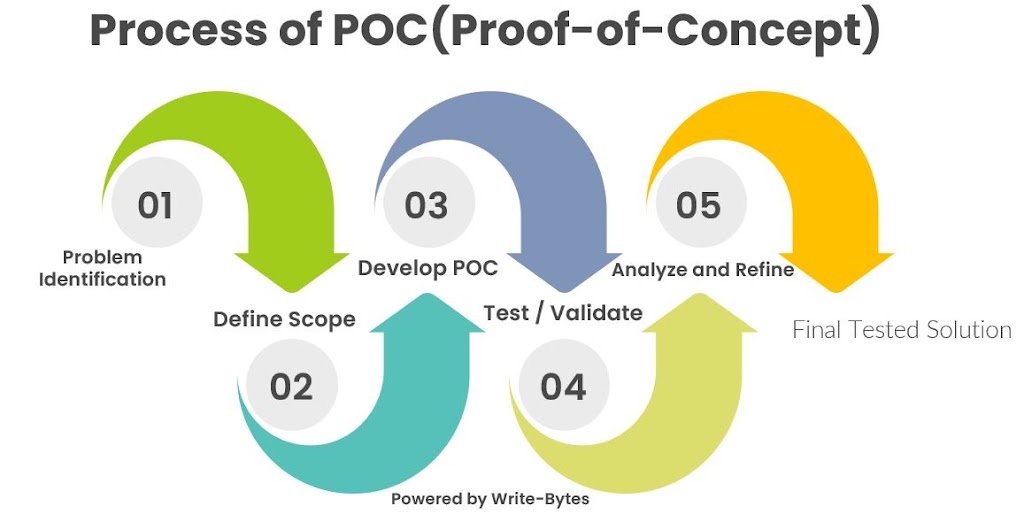Why Proof of Concept is Essential for Successful Product Development
When it comes to product development, having a great idea is just the first step. The road to success is often long, winding, and full of obstacles. That’s why it’s essential to have a proof of concept before moving forward with the development process. A proof of concept is a preliminary version of a product that demonstrates its feasibility and potential. It’s a valuable tool that can help you save time and money in the long run by identifying potential issues early on.
In this article, we’ll explore why proof of concept is essential for successful product development and how it can help you turn your great idea into a profitable product. So, buckle up and get ready to learn why a proof of concept is a crucial step in the product development process.
What is a Proof of Concept?
A proof of concept (POC) is a preliminary version of a product that demonstrates its feasibility and potential. It’s usually a simple and basic prototype that can be used to test and validate the core ideas behind a product. A POC is designed to answer the question, “Can this idea work?” It’s not meant to be a fully functional product, but rather a way to test the underlying assumptions and prove that the concept is viable.
A proof of concept can take many forms, depending on the nature of the product being developed. For example, a software product might have a proof of concept that consists of a basic demo that shows how the software works. A hardware product might have a proof of concept that consists of a basic prototype that demonstrates the key features of the product.
The Purpose of Proof of Concept
The primary purpose of a proof of concept is to test and validate the core ideas behind a product. It’s a way of answering the question, “Can this idea work?” before investing time and resources into developing a fully functional product. By creating a POC, you can identify potential issues early on and make adjustments before moving forward with the development process.
A proof of concept also helps to communicate the vision of the product to stakeholders, including investors, customers, and team members. It’s a way of demonstrating that the product has potential and that there is a viable market for it. A POC can help build excitement and generate interest in the product, which can be crucial in securing funding and support.
Benefits of Proof of Concept
There are several benefits to creating a proof of concept before moving forward with product development. Here are a few of the key benefits:
1. Identify potential issues early on
Creating a POC allows you to identify potential issues early on in the development process. By testing the core ideas behind the product, you can identify any fundamental flaws or limitations that need to be addressed. This can save time and money in the long run by preventing you from investing resources into a product that is ultimately not viable.
2. Validate assumptions
Creating a POC allows you to validate your assumptions about the product. By testing the core ideas behind the product, you can determine whether there is a viable market for it and whether it meets the needs of potential customers. This can help you make informed decisions about whether to move forward with development and what features to prioritize.
3. Build excitement and generate interest
Creating a POC can help build excitement and generate interest in the product. By demonstrating that the product has potential, you can generate buzz and attract attention from investors, customers, and team members. This can be crucial in securing funding and support for the product.
4. Reduced risk of failure:
By creating a PoC, the risk of failure is reduced as it helps in identifying any potential issues or limitations before investing significant resources in the development phase.
5. Improved efficiency:
PoC helps in identifying any potential issues or limitations in the initial stages of development, which helps in improving the efficiency of the development process.
6. Cost-effective:
PoC is a cost-effective way to test the feasibility and effectiveness of an idea or technology before investing significant resources in the development phase.
7. Better decision-making:
PoC helps in making informed decisions by providing insights into the feasibility and effectiveness of an idea or technology.
Proof of Concept vs Prototype
While a proof of concept and a prototype are both important parts of the product development process, they serve different purposes. A proof of concept is a preliminary version of a product that demonstrates its feasibility and potential. It’s a way of testing the core ideas behind the product and validating assumptions. A prototype, on the other hand, is a more advanced version of the product that is closer to the final version. It’s a way of testing the design and functionality of the product and identifying any issues that need to be addressed before launching.
While a proof of concept is usually a simple and basic prototype that can be used to test the core ideas behind a product, a prototype is a more advanced version of the product that is closer to the final version. A POC is designed to answer the question, “Can this idea work?” while a prototype is designed to answer the question, “How can we make this idea work better?”
How to Create a Proof of Concept
Creating a proof of concept can be a challenging task, but it’s essential for successful product development. Here are a few steps to follow when creating a proof of concept:
1. Define the core ideas behind the product
The first step in creating a proof of concept is to define the core ideas behind the product. This involves identifying the key features and functionality of the product and determining how they will work together to create a viable solution.
2. Develop a basic prototype
Once you have defined the core ideas behind the product, the next step is to develop a basic prototype. This can be a simple and basic version of the product that demonstrates the key features and functionality.
3. Test the core ideas
The third step is to test the core ideas behind the product. This involves using the basic prototype to validate assumptions and identify potential issues. By testing the core ideas, you can determine whether the product is feasible and whether there is a viable market for it.
4. Refine and improve
The final step is to refine and improve the proof of concept based on feedback and testing. This involves making adjustments to the core ideas, improving the prototype, and identifying any additional features or functionality that need to be added.
Tools and Techniques for Proof Of Concept
There are several tools and techniques that can be used to create a proof of concept. Here are a few of the most common:
1. Storyboards
Storyboards are a visual representation of how the product will work. They can be used to map out the user experience and identify potential issues.
2. Wireframes
Wireframes are a simple and basic visual representation of the product. They can be used to test the design and functionality of the product and identify any issues.
3. Mockups
Mockups are a more advanced version of the product that is closer to the final version. They can be used to test the design and functionality of the product and identify any issues.
4. Rapid prototyping
Rapid prototyping involves creating a basic prototype of the product using 3D printing or other rapid prototyping techniques. This can be a quick and easy way to test the core ideas behind the product.
Key Components of a Proof of Concept
A proof of concept should include several key components. Here are a few of the most important:
1. Problem statement
The problem statement should clearly define the problem that the product is designed to solve.
2. Value proposition
The value proposition should clearly define the value that the product will provide to customers.
3. Core ideas
The core ideas should define the key features and functionality of the product.
4. User experience
The user experience should be mapped out to demonstrate how the product will work for customers.
5. Technical feasibility
The technical feasibility should be tested to ensure that the product is viable and can be developed using available technology.
Examples of Successful Proof of Concept
There are many examples of successful proof of concept in the tech industry. Here are a few of the most notable:
1. Uber
Uber started as a proof of concept in 2008. The founders developed a simple prototype that demonstrated how the app would work and tested it on a small group of friends.
2. Dropbox
Dropbox started as a proof of concept in 2007. The founders developed a simple prototype that demonstrated how the file-sharing service would work and tested it on a small group of friends.
3. Airbnb
Airbnb started as a proof of concept in 2007. The founders developed a simple prototype that demonstrated how the service would work and tested it on a small group of friends.
Common Mistakes to Avoid in Proof of Concept
There are several common mistakes that can be made when creating a proof of concept. Here are a few to avoid:
1. Focusing too much on the details
A proof of concept should be simple and basic. Focusing too much on the details can lead to a prototype that is too complex and expensive to develop.
2. Not testing assumptions
Testing assumptions is a crucial part of creating a proof of concept. Failing to test assumptions can lead to a product that is not viable.
3. Not getting feedback
Getting feedback from customers, investors, and team members is essential for successful product development. Failing to get feedback can lead to a product that is not well received.
Conclusion: Why Proof of Concept is Essential for Successful Product Development
In conclusion, creating a proof of concept is a crucial step in the product development process. It allows you to test and validate the core ideas behind a product, identify potential issues early on, and build excitement and generate interest in the product. By following the steps outlined in this article and avoiding common mistakes, you can create a successful proof of concept that will help you turn your great idea into a profitable product. Remember, a proof of concept is not a guarantee of success, but it’s an essential tool that can increase your chances of success and help you avoid costly mistakes


